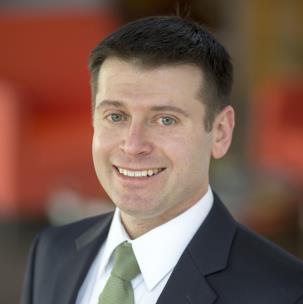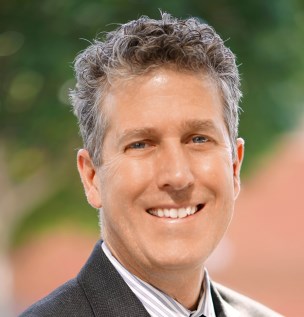Continuing Education
In This Section
Night School 17
Design of Curved Members / Facade Attachments
Design of Curved Members
Although the structural behavior of curved members can be much different from their straight counterparts, the Design Guide provides recommendations for using the AISC Specification equations for straight members to design curved members. This “equivalent straight member” method will allow the use of existing commercial software for curved member design by modifying effective length factors and lateral-torsional buckling modification factors to account for the curvature.
Guidance for Supporting Facades on Steel-Framed Buildings
The attachments of modern facade systems to the primary building structure can present some of the most difficult challenges on any building. It involves a number of different parties—the owner, the architect, the structural engineer, the building envelope consultant, and many different contractors—coming together to create a facade that achieves aesthetic, thermal, air infiltration, and moisture objectives. This course will provide guidance for practicing structural engineers, architects, and contractors on how to navigate this aspect of a building’s design that is vitally important but often given less attention than it deserves.
- Date: 6/18/18 - 8/6/18
- Duration: 1.5 hours per session
- Location: Night School
- Substitutions and Cancellations: Substitutions may be made at any time. Cancellations received 1-3 days prior to the webinar will be charged a $50 service charge. Cancellations and no shows the day of the webinar session will not receive a refund.
-
Connection Instructions: Upon registration, you will receive a confirmation email containing your receipt, a link to access the webinar, dial-in audio instructions, and a link to a PDF handout of slides.
Sessions
This session presents general information on curved members including an overview to the coming soon AISC Design Guide. The session will introduce the attendees to bending geometries, bending processes, and considerations for design for bending: curving mechanics, fracture during bending and distortion. Additional design considerations, tolerances contract documents and more, are also discussed.
This session addresses the treatment vertically-curved members. Topics include axial strength, flexural strength, combined axial and flexural loads, local strength and connections
The session addressses the treatment of horizontally-curved members. Topics include: flexural strength, torsional strength, combined flexural and torsional loads, serviceability, local strength and connections.
This session will present a design example for vertically-curved members. In addition to demonstration the design of the member, the example will address the design of the connection. Then, the session will present a design example for horizontally-curved members. In addition to demonstration the design of the member, the example will address the design of the connection.
Attaching modern facades to buildings requires an understanding of how facade systems perform—from moisture and thermal performance to structural performance. Developing successful facade attachments requires consensus among a number of different parties about the objectives for the facade system. The project team needs to establish who is responsible for various portions of the design and also establish the criteria against which the system’s performance will be compared. In this session, we will explore these issues in depth to set projects up for success.
This session addresses the following topics:
- Fundamentals of Facade Performance
- Design Criteria
- Design and Execution Responsibilities
- Thermal Separations
- Accommodating Tolerances
Every type of facade system presents its own challenges for the design team: where and how are the gravity and lateral loads supported? How much movement can the facade system accommodate? What is the jointing pattern? In this session, we will explore masonry cavity wall systems, aluminum-glass curtain wall systems and panelized systems such as precast concrete panels or prefabricated metal-framed panels with masonry or glass-fiber reinforced concrete facing to help answer these questions.
This session will presents the following topics:
- Traditional Masonry Cavity Walls
- Aluminum-Glass Curtain Walls
- Panelized Facade Systems
- Sizing Joints for Vertical Movement
Many multi-story structural-steel-framed buildings support the facade’s gravity and lateral loads from the spandrel beams or the slab edges. In this session, we will examine the pros and cons of connections to spandrel beams and slab edges along with methods for designing these elements for facade loads. The session will include a series of example problems that address issues of strength and stiffness.
This session will presents the following topics:
- Design of Steel-Framed Slab Edges for Facade Attachments
- Design of Steel Spandrel Beams
- Cladding Supports Away From Floors
When buildings sway under wind and seismic loads, the facade systems must accommodate interstory drifts between the building’s floor levels. Finding ways to accommodate these drifts through the height of the building, particularly at corners and at the ground story, can be challenging. In this session, we will consider ways to detail facade attachments to accommodate a building’s lateral drifts.
Speakers

Bo Dowswell
Principal of ARC International, an engineering firm specializing in research and consulting for steel structures.

Alec Zimmer
Alec S. Zimmer is a Senior Project Manager in Simpson Gumpertz & Heger’s Waltham, MA, office.
Registration
Price Info
| Individual Live Sessions |
$185 Member Prices are per webinar. Registration includes certificates for an unlimited number of people at one connection site. |
Register |
| 8-Session Package |
$500 Member Registration includes a certificate for the registrant only. |
Register |
| Substitutions and Cancellations |
Substitutions may be made at any time. Cancellations received 1-3 days prior to the webinar will be charged a $50 service charge. Cancellations and no shows the day of the webinar session will not receive a refund. |
PDH Credits
| Individual Live Sessions | 1.5 PDHs per webinar (up to 12.0 PDHs) to unlimited attendees at each connection |
| 8-Session Package | Up to 12.0 PDHs (1.5 PDHs per attended session) to the registrant only |
Attendance
| Individual Live Sessions | Live only |
| 8-Session Package | Watch sessions live or watch"make up" (recorded) sessions available online for four weeks after air date. Credit for recorded sessions is given only when quiz is passed. |
Quiz + Recording Access
| Individual Live Sessions | Not available |
| 8-Session Package | Available online for four weeks after air date. Access to quiz and recording available through MyAISC account. |
Certificate of Completion
| Individual Live Sessions | Not available |
| 8-Session Package | 1 EEU (Equivalent Education Unit), AISC's certificate of completion, for the registrant only. Eight session registrants who attend all sessions (live or recorded) and pass 7 of 8 quizzes and the final exam will be awarded 1.0 EEU. Earning an EEU is worth a maximum of 12 PDHs. |
Quiz and Attendance records
Quiz Scores and Attendance
Quiz Answers
Quiz 1: 1. e, 2. f, 3. a, 4. f, 5. c, 6. c, 7. c, 8. f, 9. a, 10. b Quiz PDF
Quiz 2: 1. d, 2. b, 3. d, 4. a, 5. a, 6. h, 7. a, 8. d, 9. b, 10. f Quiz PDF
Quiz 3: 1. d, 2. b, 3. d, 4. a, 5. e, 6. b, 7. e, 8. b, 9. e, 10. e Quiz PDF
Quiz 4: 1. b, 2. a, 3. b, 4. d, 5. c, 6. d, 7. a, 8. c, 9. b, 10. a Quiz PDF
Quiz 5: 1. c, 2. d, 3. a, 4. b, 5. d, 6. c, 7. a, 8. b, 9. a, 10. a Quiz PDF
Quiz 6: 1.b, 2. c, 3. c, 4. d, 5. b, 6. d, 7. b, 8. c, 9. b, 10. b Quiz PDF
Quiz 7: 1. a, 2. d, 3. d, 4. b, 5. b, 6. a, 7. c, 8. d, 9. c, 10. d Quiz PDF
Quiz 8: 1. f, 2. d, 3. d, 4. e, 5. d, 6. b, 7. b, 8. b, 9. a, 10. c Quiz PDF
Final Exam 1. c, 2. c, 3. c, 4. f, 5. f, 6. b, 7. a, 8. f, 9. d, 10. d, 11. c, 12. c, 13. c, 14. a, 15. d, 16. d, 17. b, 18. d, 19. a, 20. b, 21. b, 22. e, 23. b, 24. b Quiz PDF

